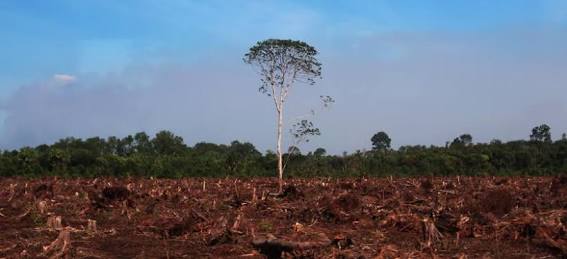Islamabad: In August 2022, when Pakistan witnessed one of the worst devastations due to monsoon rains, glacier melting and floods, putting over one-third of the country under water and forcing millions from their homes, the country’s monsoon season was described as “on steroids”.
Today, while Pakistan’s reconstruction and rehabilitation phase moves at a snail’s pace with prime dependency on foreign global partners, we dwell into the major components that remain as pivotal part of the country’s shortcomings in becoming climate resilient.
For decades, Pakistan has experienced deadly and severe floods. This has resulted in surfacing of challenges, including land degradation and improving water management.
A country that has been struggling to keep its economy afloat in the midst of an unprecedented debt crisis, Pakistan has failed to forge a balancing act for climate resilience, keeping it under constant threat of new climate change-related disasters.
It is the reason why Pakistan has become a precursor of climate resilience. But it faces extraordinary challenges and hurdles in doing so, as it depends heavily upon the goodwill of its international partners.
During November 2022, then sitting Minister for Climate Change, Sherry Rehman, addressed the UN Climate Conference of Parties (COP27) and said that the unprecedented floods and monsoon rains in the country were an indication as to how Pakistan is being impacted by the climate crisis that is mainly caused by other countries’ emissions.
Water Management
Pakistan’s diverse geography has been the reason why climate change causes faster glacier melting in the north, increases the frequency of droughts, and raises flood risks and salinity levels in the country’s Indus River delta.
Multiple floods in recent years have caused thousands of casualties, yet over 80 per cent of the population currently experiences severe water scarcity.
Pertinent to note that Pakistan is a nation that has gone from being a water-rich country in 1962 to a water-scarce one, mainly because of the overdrawing of groundwater.
The country only treats about 1 per cent of its wastewater before it is discharged into the rivers and drains, further limiting the supply of usable water.
Water management carries massive importance in reference to climate change effects in Pakistan, as the country’s 93 per cent freshwater use is dedicated to the agricultural sector.
“Water-saving measures net big-return and also could primarily take the form of discouraging the flooding of farmlands, shifting to less water-intensive crops, and using rainwater capturing techniques.
“Educating the local farmers on how to conserve water by using what is needed for maximum effect would help take some pressure off Pakistan’s water resources,” said Pieter Pauw, a research associate at Dutch think-tank Clingendael Institute, and senior researcher on climate police and climate finance at Eindhoven University of Technology, the Netherlands.
Land Degradation
One of Pakistan’s biggest problems is land degradation issues due to heavy deforestation and the intensive use of agricultural land, which further aggravates both the effects of climate change on the country besides severely threatening biodiversity.
The rural areas of Pakistan and their residents are primarily dependent on agriculture for food and income. This has resulted in soil degradation, excessive consumption of water with almost zero practice of regenerative agricultural practices.
One startling fact and what should be a reality check for Pakistan is that forests accounted for at least 30 per cent of the country’s total land area in 1947. However, that percentage has shrunk to only 4 per cent currently.
Changing Weather Patterns
Climate change risks refer to various adverse effects and potential consequences of the ongoing changes in the Earth’s climate patterns, primarily driven by human activities, such a release of greenhouse gas into the atmosphere.
“Successful practices around the world to reduce climate change risks through urban development and sustainable water management typically involve a combination of strategies, policies and technologies aimed at mitigating greenhouse gas emissions and adapting to the impacts of climate change.
“These practices are essential for countries like Pakistan, which are vulnerable to the adverse effects of climate change, including extreme weather events, water scarcity and rising temperature,” said climate change expert Anwar Farooq.
“Pakistan, like many other countries, must use urban development and sustainable water management techniques to reduce climate change risks due to its unique vulnerabilities and challenges.
“The reasons why Pakistan must adopt these practices include vulnerability to climate change impact, rapid urbanisation, water scarcity, flood vulnerability, heavy dependence on agriculture, rapid glacial melt, continuously increasing health risks, challenges related to energy security, issues related to biodiversity conservation, urgent requirement of economic stability and social well-being.
“Pakistan must use urban development and sustainable water management techniques to address its specific climate change risks and vulnerabilities. These practices are essential for protecting the environment, economy and the well-being of its people while contributing to the global efforts to combat climate change,” he added.
Economic Hurdles
Pakistan’s dire economic crisis has forced the country under immense pressure, as it struggles to find the capacity to improve land and water management.
Pakistan has had to repeatedly reach out and negotiate with the global lender International Monetary Fund (IMF) to ensure to keep its economy afloat. This has put Pakistan heavily dependent on the external financial streams of credit and finance to fund its climate adaptation and mitigation efforts.
Amid a climate crisis largely caused by greenhouse gas emissions of industrialised countries, Pakistan’s roadmap to tackle climate change primarily banks on a steady and reliable source of external funding.
–IANS


Comments are closed.